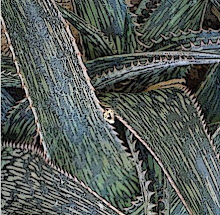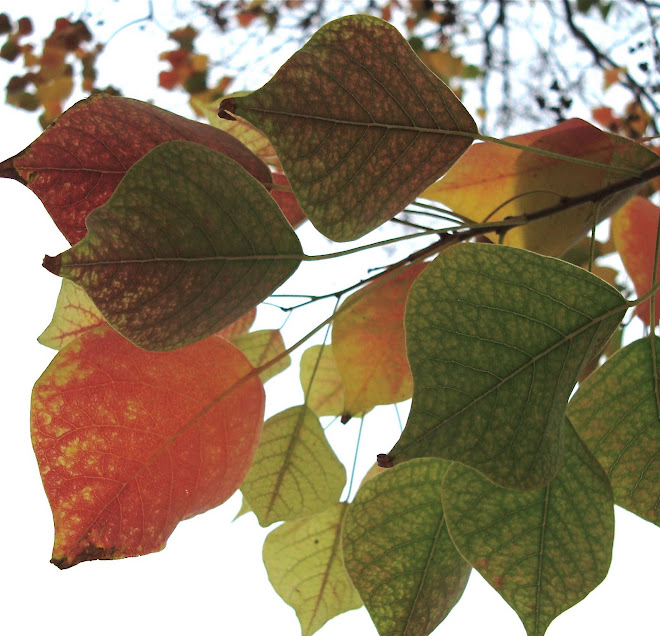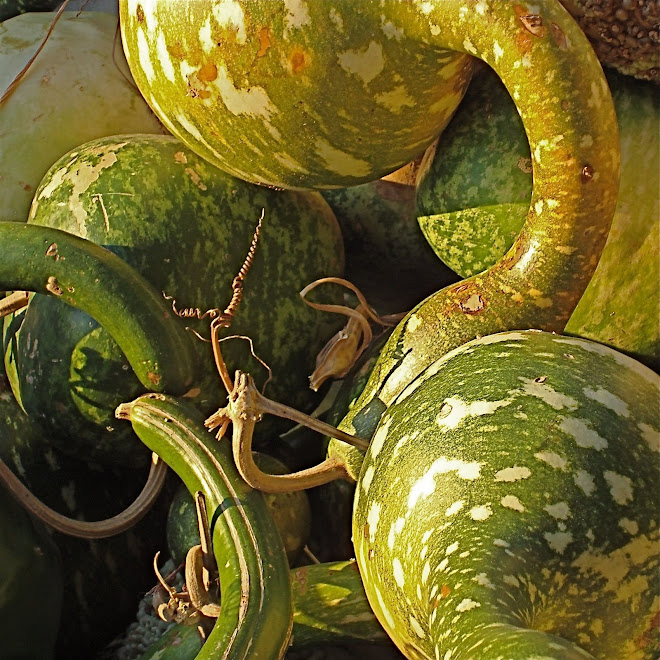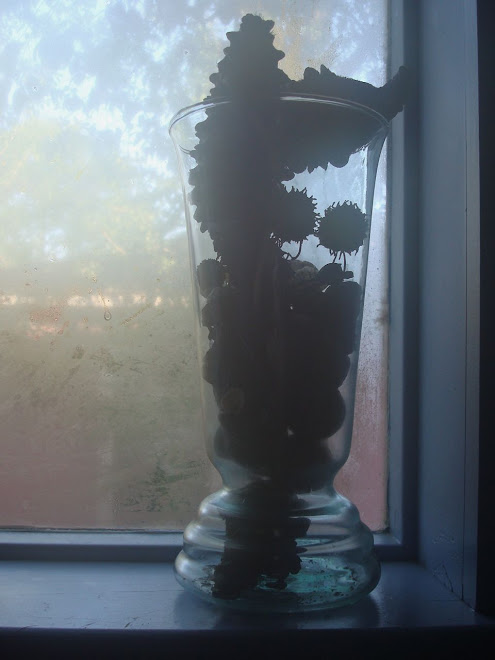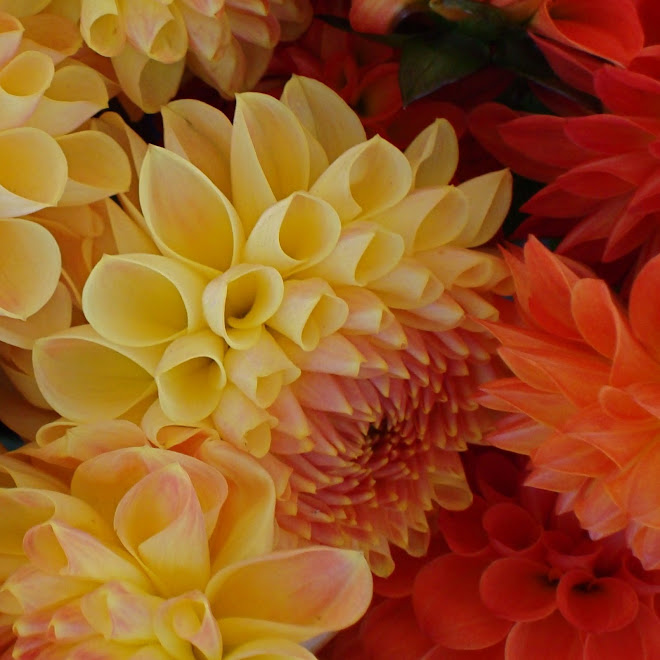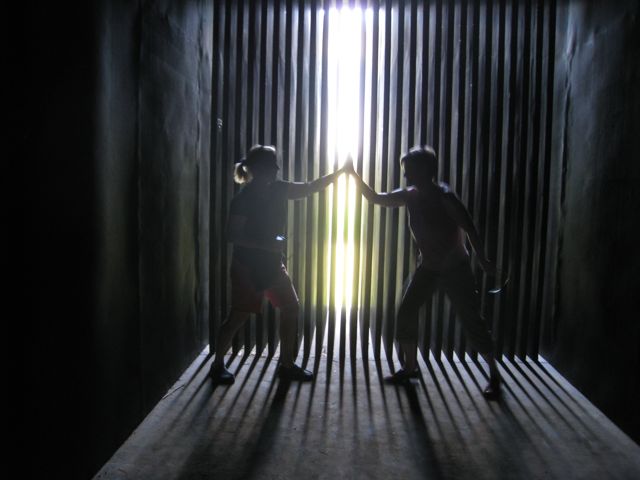
Saturday, February 28, 2009
Friday, February 27, 2009
Thursday, February 26, 2009
Wednesday, February 25, 2009
February 25, 2009
 "Without the difficulty of being hemmed in, a tree in the forest would not be forced to marshal its power to grow toward the light. It must truly bring forth all its inner strength to spread its branches. If it becomes grand, it is in part because of its suffering. Thus the times of adversity can be crucial to the development of one's inner personality."
"Without the difficulty of being hemmed in, a tree in the forest would not be forced to marshal its power to grow toward the light. It must truly bring forth all its inner strength to spread its branches. If it becomes grand, it is in part because of its suffering. Thus the times of adversity can be crucial to the development of one's inner personality."#54: Adversity
365 Tao
Deng Ming-Dao
Tuesday, February 24, 2009
Monday, February 23, 2009
February 23, 2009
 "Flowers arouse in us an instinct to protect them, to appreciate them and to shelter them. The world is too ugly, too violent. There should be something delicate to care about. To do so is to be lifted above the brute and to go toward the refined...
"Flowers arouse in us an instinct to protect them, to appreciate them and to shelter them. The world is too ugly, too violent. There should be something delicate to care about. To do so is to be lifted above the brute and to go toward the refined...The tenderness of flowers arouses mercy, compassion and understanding. If that beauty is delicate, so much the better. Life itself is fleeting. We should take time to appreciate beauty in the midst of temporality."
#51 Beauty
365 Tao: Daily Meditations
Deng Ming-Dao
Sunday, February 22, 2009
Saturday, February 21, 2009
Friday, February 20, 2009
Thursday, February 19, 2009
Wednesday, February 18, 2009
Tuesday, February 17, 2009
Monday, February 16, 2009
Sunday, February 15, 2009
Saturday, February 14, 2009
February 14, 2009

This Year's Valentine
They could
pump frenzy into air ducts
and rage into reservoirs,
dynamite dams
and drown the cities,
cry fire in theaters
as the victims are burning,
but
I will find my way through the blackened streets
and kneel down at your side.
They could
jump the median, head-on,
and obliterate the future,
fit 45's to the hands of kids
and skate them off to school,
flip live butts onto tinderbox forests
and hellfire half the heavens,
but
in the rubble of smoking cottages
I will hold you in my arms.
They could
send kidnappers to kindergartens
and pedophiles to playgrounds,
wrap themselves in Old Glory
and gut the Bill of Rights,
pound at the door with holy screed
and put an end to reason,
but
I will cut through their curtains of cunning
and find you somewhere in the moonlight.
Whatever they do with their anthrax or chainsaws,
however they strip search or brainwash or blackmail,
They cannot prevent me from sending you robins,
all of them singing, I'll be there.
Phillip Appleman
Friday, February 13, 2009
February 13, 3009
 I've been organizing new sets of color chips for a class I teach soon, and I am dreaming color at night. It's the perfect time to do a series of images inspired by colors.
I've been organizing new sets of color chips for a class I teach soon, and I am dreaming color at night. It's the perfect time to do a series of images inspired by colors.Blue and green are analogous colors. Neighbors on the color wheel. This blue pot is set off by the beautiful range of green colors around it - the second pot, the bench and the foliage in the background. The bits of orange brick wall play an important part generating interest. Orange is the complement to blue - its opposite on the color wheel. Adding (or finding) the complement in a picture creates valuable color contrast. Most of the time it only takes a small amount of the contrasting color to spark the composition.
Thursday, February 12, 2009
Wednesday, February 11, 2009
Tuesday, February 10, 2009
February 10, 2009

Footsteps in the sand
Quickly washed away;
The seashore mind.
"We often let thoughts, regrets, and doubts from past activities carry over into the present. This leads us to conflict. Instead of allowing this to happen, we should act without leaving consequences. This requires great thoroughness. Such completeness is challenging, but to succeed, is to live perfectly. By resolving the problems of each day to our utmost satisfaction, we attain the sublime purity of a beach constantly washed by waves."
41: Resolution
365 Tao: Daily Meditations
Deng Ming-Dao
Monday, February 9, 2009
February 9, 2009

Heaven embraces the horizon
No matter how jagged the profile,
The sky faithfully conforms.
"Wherever you are, the sky constantly meets the horizon...We often think of the landscape as being in the foreground and the sky as the background. It is because the sky is always in the background that it can meet the outline of the foreground perfectly. If we emulate this feature of being in the background, then we too can find perfect conformity with life. Such adaptation is not passivity, however. It is concordance. It is because the sky is in the background that it is in fact supreme. So too with ourselves. If we know how to adapt, we end up being supreme."
Adapting
365 Tao: Daily Meditations
Den Ming Dao
Sunday, February 8, 2009
Saturday, February 7, 2009
Friday, February 6, 2009
February 6, 2009
 Another photograph that would make a good simplification/abstraction study of form. The most important forms are the two purple bottles, the turquoise bottle, and the negative space on the left that curves around to the top right. The two purple bottles are the same shape, so repetition supports relationship in the composition.
Another photograph that would make a good simplification/abstraction study of form. The most important forms are the two purple bottles, the turquoise bottle, and the negative space on the left that curves around to the top right. The two purple bottles are the same shape, so repetition supports relationship in the composition.Reduced to the four basic forms we see here, the new picture might not be very interesting. It would be well balanced, as the bottom-heavy shape of the purple bottles provides visual weight. But without the beautiful translucence of the glass and the subtle color variations, the interest generated by the image would be minimal.
That's one challenge of abstracting and/or simplifying a composition. How could color and texture be re-introduced, in order to keep the image one worth studying?
Thursday, February 5, 2009
Wednesday, February 4, 2009
February 4, 2009
 One way to think about abstraction and composition is to study a picture in terms of form. Many images - whether photographs or scenes from real life - are complicated by detail. An aspect of thinking abstractly involves reducing a picture to its most important forms.
One way to think about abstraction and composition is to study a picture in terms of form. Many images - whether photographs or scenes from real life - are complicated by detail. An aspect of thinking abstractly involves reducing a picture to its most important forms. In this image, there are three dominant and individual forms: the large flower and mass of green leaf, the smaller bud and stalk of green attached to it, and the orange wall.
The wall counts as a form, even though many people would only see it as background. The wall is the negative space and this part of a composition isn't always recognized as valuable. But the positive elements of a picture have to react to something - to some background. A strong color like orange, or patterning and texture, make a background more interesting, and increase its contribution to the composition.
If I wanted to explore this still life's potential as an abstract composition I could cover it with tracing paper, and trace the outlines of the three main forms. Transferring the line drawing to paper or cloth would allow me to paint in the shapes; formalizing the basic compositional structure. There would still be issues to consider - balance, and certainly color. Reducing this picture to three elements removes the gorgeous texture and pattern that made it a successful photo. Color selection and application would be critical in order to translate it into an equally successful abstract image.
Tuesday, February 3, 2009
February 3, 2009
 Sometimes there isn't anything that can be done to fix a work in progress. Many surface designers have experienced the frustration of burning a hole in fabric with bleach. Or the regrettable last printed image that isn't working, but you don't see it until after the paint has dried. Maybe you've tried a creative save under those circumstances, but you never feel really great about it. At least I don't. I would rather turn back the hands of time...
Sometimes there isn't anything that can be done to fix a work in progress. Many surface designers have experienced the frustration of burning a hole in fabric with bleach. Or the regrettable last printed image that isn't working, but you don't see it until after the paint has dried. Maybe you've tried a creative save under those circumstances, but you never feel really great about it. At least I don't. I would rather turn back the hands of time...This picture suffers, unfortunately, from design problems that can't be fixed. Ok, maybe in Photoshop, but that's not an option for me.
Here's why:
The partial body on the right leads the viewer's eyes out of the picture. And a partial human being disrupts the visual comfort zone. Part of anything has to be a deliberate choice; the human eye yearns to complete the form! But it is impossible to crop out the mother without losing part of the daughter, too. And that just won't do.
The little girl's head gets lost against the background of trees beyond the wall, and that's a problem too. If only I'd caught her a few steps away from her mother, and one step down! A little girl joyfully hopping down the steps - the focal point of the composition without the distraction of the trees, the sky, and the mother. Eliminating the distractions and keeping her close to the middle of the picture would be a great statement on centering and bliss. The picture had potential, but the opportunity was lost. There's something to be said for recognizing that and moving on.
Monday, February 2, 2009
February 2, 2009

 These images are examples of the importance of balance in a composition. The image on the right is the first one I generated. I liked the four columns (repetition) and the strong girders, which both support the vertical elements and oppose them. But there was something off about the way I'd cropped the photograph. The longer I studied it, the more I realized that the red-orange support on the right was too big. It overpowers the rest of the elements, even though it only fills about a third of the space!
These images are examples of the importance of balance in a composition. The image on the right is the first one I generated. I liked the four columns (repetition) and the strong girders, which both support the vertical elements and oppose them. But there was something off about the way I'd cropped the photograph. The longer I studied it, the more I realized that the red-orange support on the right was too big. It overpowers the rest of the elements, even though it only fills about a third of the space!I copied the photo and played around with cropping it again. I settled on the version you see at the top. The large column on the right is now balanced within the picture world through the addition of the blue sky elements on the right and left. Notice that the blue sky form on the left is broken into two segments by one of the narrow columns, but it reads visually as a continuous shape.
In the first version of the picture, the two blue bits of sky don't hold their own against the bold, largest column. In the second picture the introduction of new blue elements changes two aspects of the composition. By adding the additional blue forms, an imaginary triangle is introduced. The triangle keeps my eyes moving around inside the picture world. The new blue form also expands the right side of the composition, so my eyes no longer bumps uncomfortably into the red-orange pillar. Balance has been introduced and the audience breathes a sigh of relief.
Sunday, February 1, 2009
Subscribe to:
Comments (Atom)
November 20, 2008
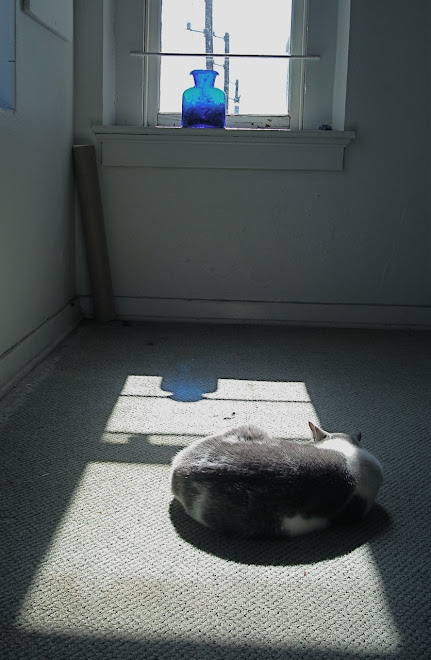
November 20, 2008
How does color set a mood? The soft gray and white of the carpet, the cat Marshall, and the sunlit window contribute to to the sense of calm repose. What does blue mean to you or me? We all have symbolic associations for colors; some based on personal experience and some instilled culturally.
The cobalt blue of the vase provides a point and counterpoint to the composition, in addition to providing elements that balance.
Keeping the cat in the lower third of the composition weights the image and is another visual door into the picture world.
November 19, 2008
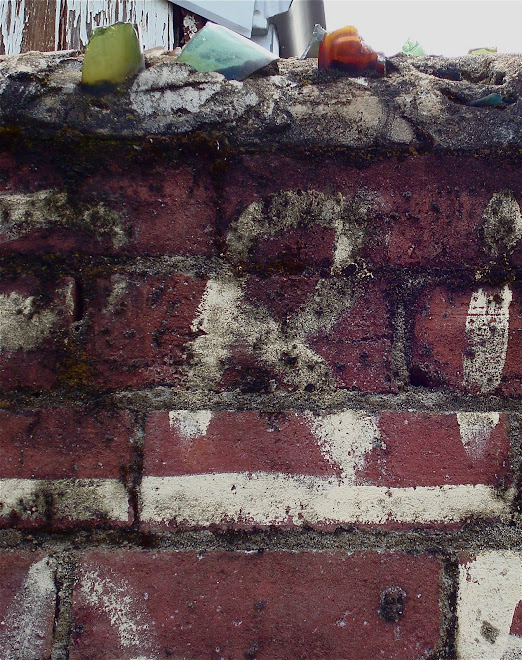
November 19, 2008
This picture tells several stories. It references the human desire to order the world around us - the lettering on the wall establishes the alley as a No Parking zone, and the broken glass- jutting out at the top - is another message of fear and frailty. Whoever lives behind this wall wants to be left alone.
But there is beauty in the contrast of the rough brick surface and the smooth translucency of the broken glass bottles. A contrast of textures makes for an interesting composition. And the abstract nature of the printed letters against the structure of the bricks would be worth emulating in another sort of composition.
November 18, 2008
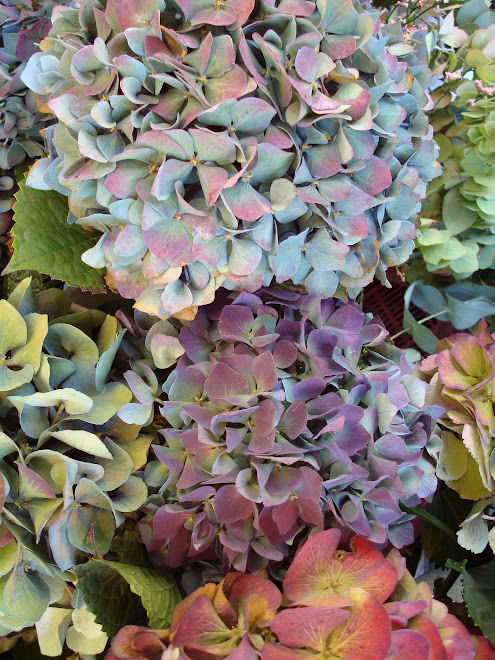
November 18, 2008
The Hydrangeas offer a lesson in the effective use of color. The pale blue and lavender are roughly the same value, so they balance each other beautifully. I am challenged to mimic that combination of analogous colors on silk Habotai!
This photograph would be considered beautiful even without the red-orange and yellow flowers at the bottom. But the addition of the complements to the blue and purple creates a focal point and generates some nice contrast because of the complementary pairing. And imagine how different this composition would be, were the red-orange and yellow at the top instead of at the bottom. The current placement adds important visual weight.
November 17, 2008
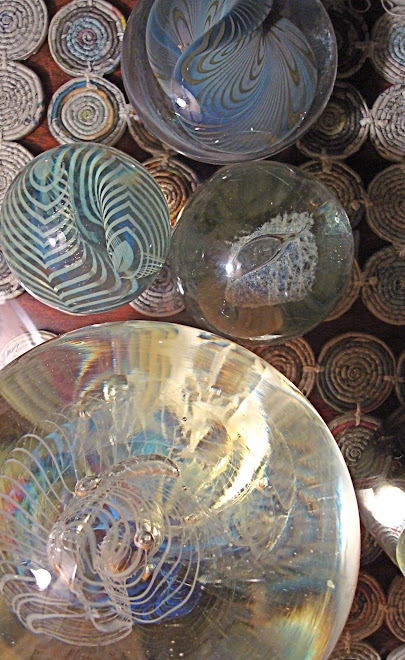
November 16, 2008
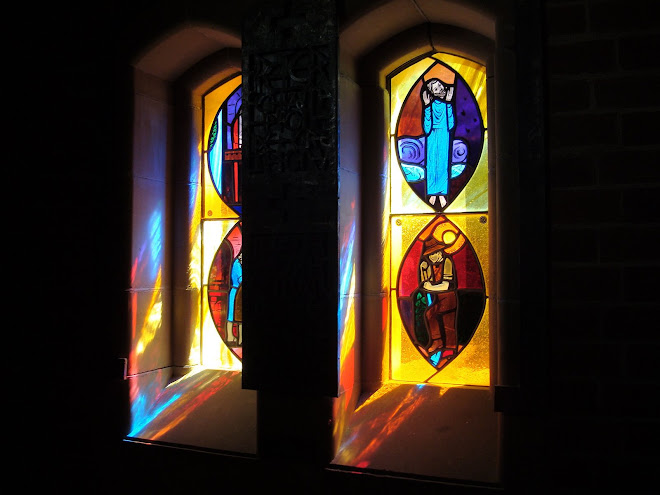
Being and Non-being

Substance and Light
November 16, 2008
We join spokes together in a wheel,
but it is the center hole
that makes the wagon move.
We shape clay into a pot,
but it is the emptiness inside
that holds whatever we want.
We hammer wood for a house,
but it is the space inside
that holds whatever we want.
We work with being,
but non-being is what we use.
Tao te Ching; Verse 11
Stephen Mitchell translation























